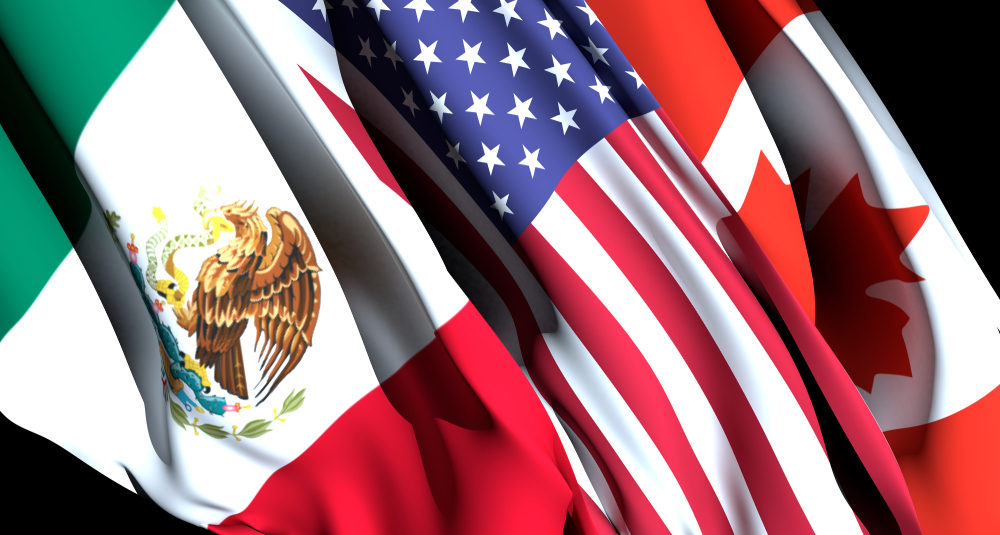Since its inception, NAFTA’s track record has been one of economic development and middle-class job creation in the US, Canada, and Mexico. It has also paved the way for unprecedented business integration between the partners who signed the agreement. All this has led to the creation of a platform which allows companies from the US, Canada, and Mexico to make things together instead of just buying and selling to one another.
NAFTA came into effect on the 1st of January 1994, facilitating the creation of the largest free-trade region the world had ever seen at that time. It stimulated economic growth and helped raise the living standards for the residents of all three member nations.
Since then, re-evaluation and strengthening NAFTA rules and regulations has proved to be a formidable foundation for building prosperity in the three countries. It also set a good example of the benefits countries can enjoy through trade liberalization.
With that said, following are the 4 major industries that have benefited from NAFTA since the member states signed it in 1994.
Automotive Industry
When people speak about NAFTA, the automotive industry is typically the one they highlight as the sector which has benefited greatly from the trade agreement. Ever since its inception, Mexico has risen to become the seventh-largest manufacturer of cars globally, totaling over 3.5 million units in 2016. Since then, the numbers have continued to increase.
One of the first US firms to identify the untapped potential of assembling vehicles in Mexico was GM. After the signing of NAFTA, GM started to invest heavily in Mexico. Since then, the automotive company has opened up three industrial complexes in Toluca and others in Guanajuato.
Retail
The retail industry has also made significant strides since the inception of NAFTA. One good example is Walmart, which ventured into Mexico back in 1991, three years before the member countries signed the agreement. To date, the retail giant remains the biggest company in its sector operating in Mexico, having close to 2,400 stores. Its sales have also soared dramatically throughout the last decade.
After NAFTA brought an end to import taxes, a huge number of foreign goods like Heinz and Procter & Gamble started to fill the shelves of Mexican retail stores. Forgein consumers could easily acquire such products because of their affordability, which may also be attributed as being a beneficial side effect of the free trade agreement.
Food
The food industry is another sector that has also managed to grow because of NAFTA. This has been seen in all three member countries across the board due to exporting raw materials and importing finished products. One good example is the Mexican company, Bimbo—a pastry company which is today considered one of the largest bakery businesses in the world.
In 1999, the company had not even set foot in Canada. However, after its profitable venture into the US, it managed to start operations in Canada in 2015. The company also purchased Sara Lee American Fresh Bakery, cementing their stake in both the US and Canadian markets, which accounted for 53% of all their net sales in 2016. These numbers have continued to rise over the years.
Technology
The best example of how NAFTA has benefited the technology industry is UTC, one of the biggest American multinational conglomerates. It deals with a wide range of products and services related to defense, aerospace, and home appliances.
As a result of the booming manufacturing sector in Mexico, particularly after the signing of NAFTA, the company has made significant investments in the country, contributing immensely to its GDP. Based on World Bank statistics, the automotive and technology manufacturing industries represented 7% of Mexico’s economy in 1999 and had later increased to 19% in 2016.
In Summary
NAFTA was a revolutionary agreement that paved the way for countries in North America to become better trade partners. Its effect has been seen in all member countries, and various companies have managed to experience significant growth. With more negotiations set to take place to make it better, we can expect to see further growth among manufacturing companies. To learn more about NAFTA affected the economies of its member countries, you can click here. We also have an article talking about the risks of doing business in Mexico, so if you’re giving thought to relocating your manufacturing there, take the time to read it over.
Subscribe
Sign up and stay informed with tips, updates, and best practices for manufacturing in Mexico.





